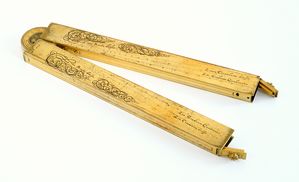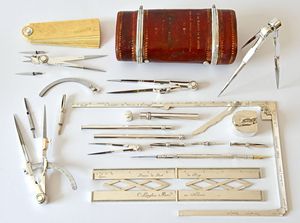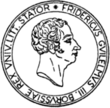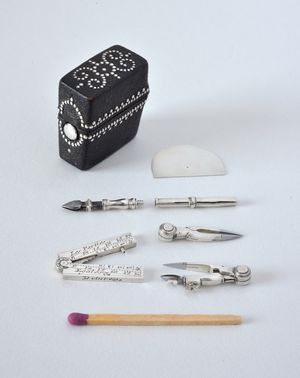The exhibition ‘Sectors and Rare Mathematical and Drawing Instruments of the 17th and 18th Centuries’, which was on display at the Arithmeum for the first time last year, has been a particularly great success. After the exhibition's first stop at the Arithmeum, it was presented at the Museo Galileo in Florence last summer and is now back at the Arithmeum until the end of the year with the most beautiful highlights, supplemented by some particularly early and rare loans from a German private collection.

Sector by Cristoph Trechsler from the year 1617 from Dresden. On loan from a private collection. © Arithmeum
Now almost completely forgotten, the sector was the universal calculating instrument for engineers, architects and scientists for over 200 years. In addition to its many practical uses, which are explained in detail in the exhibition, the proportional compass is particularly impressive due to its high-quality manufacture in the finest materials, such as gold-plated brass or pure silver, and its beautiful decorative elements. The exhibition therefore appeals not only to scientists and connoisseurs, but also to those interested in cultural history who are keen to learn something new and are enthusiastic about aesthetics.
Individual guided tours, workshops, children's and school programs can be booked through the Arithmeum's visitor service.
The exhibition is accompanied by a richly illustrated 364-page catalog (in German “Proportionalzirkel” and in English “Sectors”) for 98 euros.

Drawing set by Claude Langlois and Charles Clément, silver, Paris ca. 1726. It was used by the architect Ange J. Gabriel (Petit Trianon for Madame de Pompadour at Versailles, Place de la Concorde). Collection Rocca.
The smallest set known in silver by Jean Baptiste Delure, ca. 1698, Paris. A masterpiece with a sector measuring only one French inch (2.7 cm)! Collection Rocca.
Sectors are a vivid example of how mathematical application can not only be useful, but also very beautiful.
You can find an introductory video to the exhibition here:
A German, French and Italian version of the video is also available.







